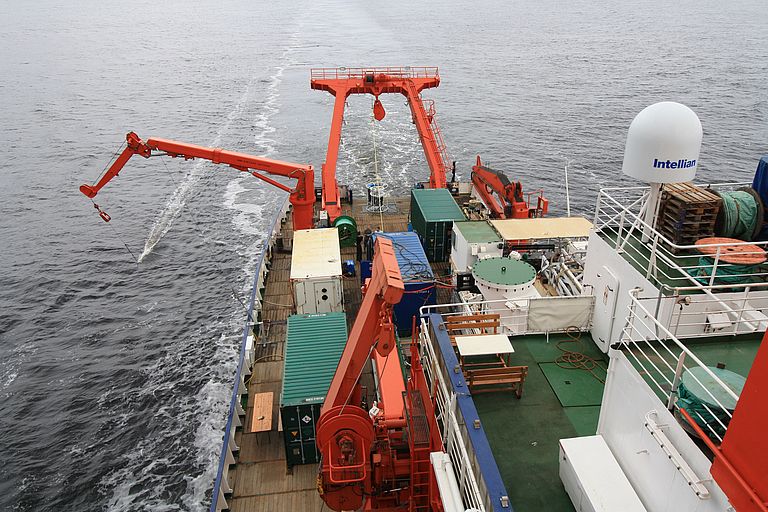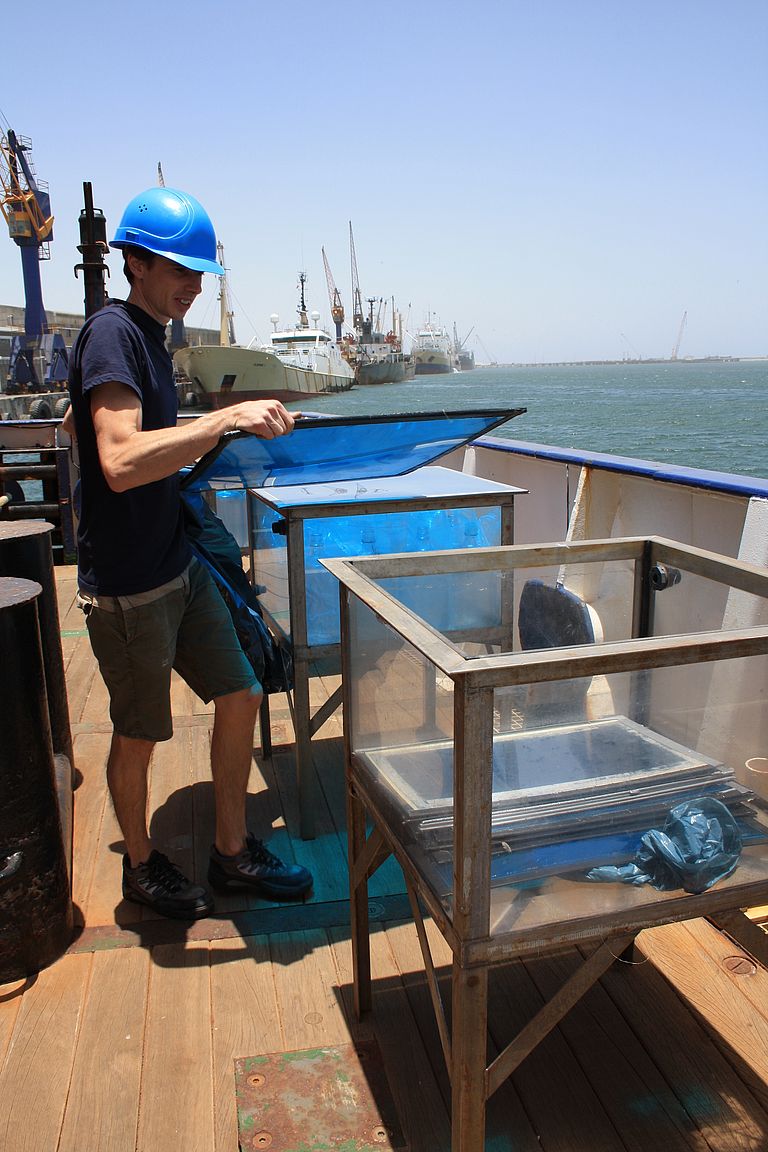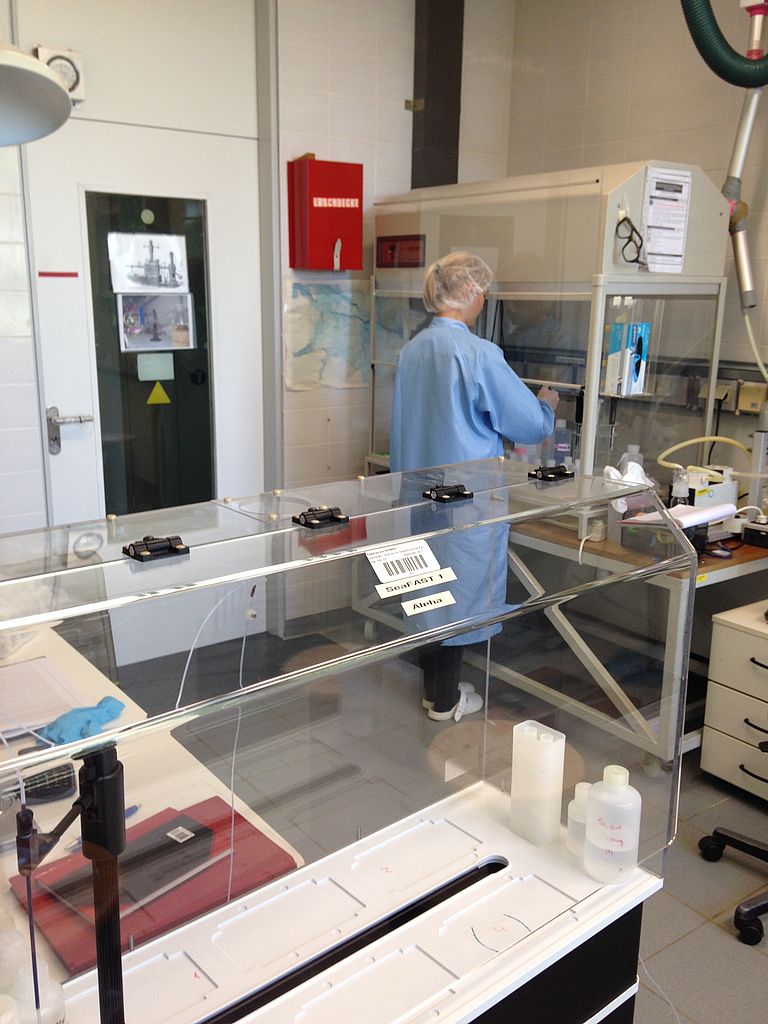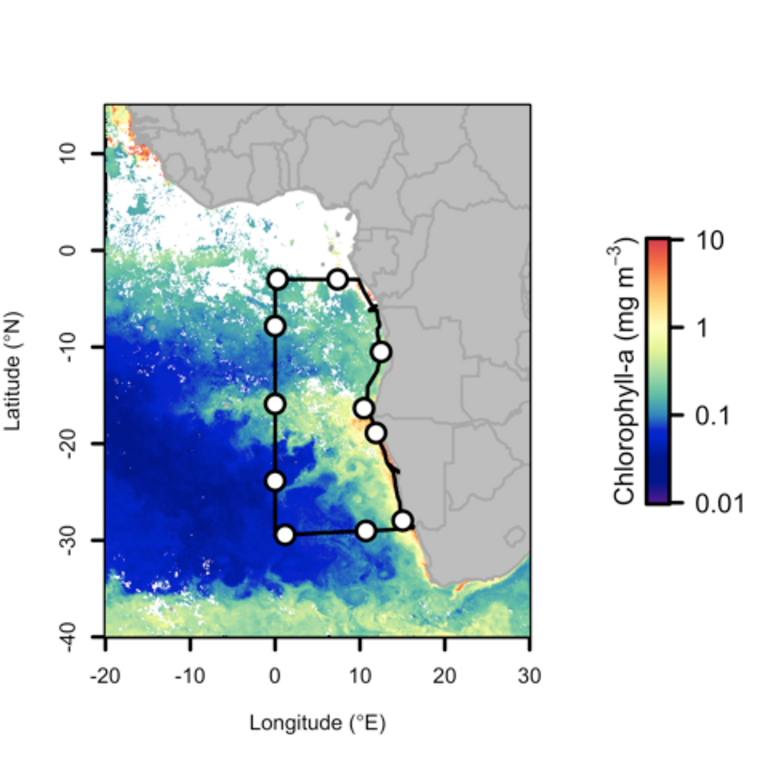A Nutrient Mix Makes Phytoplankton Thrive
New Nature study provides experimental evidence for widespread nutrient co-limitation
Fluxes of nutrients to the surface ocean are changing. Such changes will almost certainly influence phytoplankton productivity and go on to impact marine food webs and the carbon cycle. But how exactly will phytoplankton productivity be affected? In order to answer this question it is important to know which nutrients limit phytoplankton growth in the ocean. Measurements of nutrient concentrations in the ocean have shown widespread depletion of multiple elements simultaneously. However, to date, no experimental studies have convincingly demonstrated so-called co-limitation of growth by more than one nutrient over large extents of the ocean.
An international research team led by the marine biogeochemist Dr. Thomas Browning from the GEOMAR Helmholtz Centre for Ocean Research Kiel has now shown that over broad regions of the South Atlantic a combination of two nutrients was needed to stimulate any phytoplankton growth, while in some cases three separate nutrients were required to maximize growth. The team has published its results in the renowned international scientific journal Nature. “Nutrient co-limitation has been proposed many times before. However, we were able to prove it experimentally over large oceanographic extents for the first time,” says Dr. Browning.
The study, a collaboration by researchers from the GEOMAR as well as colleagues from Dalhousie University in Halifax (Canada), the University of Liverpool (UK) and the University of Southampton at the National Oceanography Centre Southampton (UK), is based on results from an expedition conducted as part of the International GEOTRACES Programme on the German research vessel METEOR off Southwest Africa in November–December 2015. At numerous sites along the 1000s of kilometers of cruise track, Dr. Browning took water samples for experiments where the nutrients nitrogen, iron, and cobalt were added in all possible combinations and incubated in an environment simulating the ocean.
“The experimental setup sounds quite simple. However, the technical implementation of these types of experiments is actually complex as we need to ensure absolutely no contamination of the experimental chambers with trace elements. This is a challenge because these elements are found almost everywhere on ships—even on new plastic surfaces,” explains Dr. Browning. “Phytoplankton are also very sensitive to light and temperature so special care had to be taken when collecting and preserving these samples”.
Spatial patterns in nutrients limiting phytoplankton growth were also found. While in some samples nearer the coastline a single nutrient significantly increased plankton growth, at least two nutrients were needed to stimulate growth in samples taken from the open ocean. “Another key finding was that we found these limitation regimes could be reconciled with the measured nutrient concentrations in the ambient seawater," says Dr. Browning.
This later result is significant as it suggests the potential for making larger scale predictions about nutrient limitation using new data from programmes like GEOTRACES—a large international effort to map nutrient concentrations in the ocean. The results also have implications for global ocean models. “Many biogeochemical models do not yet adequately address the importance of nutrient co-limitation. Our study can help to improve representation of this,“ says the Dr. Browning. However, he adds: “Of course this is only the first step. Similar experiments should be conducted in other regions to assess how widespread the phenomenon is. Ultimately, combining such information with worldwide nutrient measurements and improvements in ocean biogeochemical models will enable us to make robust predictions about nutrient limitation and its response to change at a global scale. "
Please note:
This work was funded by a Marie Skłodowska-Curie Postdoctoral European Fellowship awarded to T.J.B (OceanLiNES; grant number 658035). Additional financial aid to T.J.B and E.A. from the European Commission is acknowledged (OCEAN-CERTAIN; grant number 603773). The cruise was led by M. Frank (GEOMAR) and was funded by the DFG.
Reference:
Browning, T. J., E. P. Achterberg, I. Rapp1, A. Engel, E. M. Bertrand, A. Tagliabue, C. M. Moore (2017): Nutrient co-limitation at the boundary of an oceanic gyre. Nature, Advance Online Publication, http://dx.doi.org/10.1038/nature24063
Bildmaterial in höherer Auflösung:
The FS Meteor sailing through the South Atlantic. The equipment being towed on the left is a water sampler, connected to a ‘clean air’ laboratory on the deck of the ship, used to collect water for the experiments without contamination. Photo: Angela Stippkugel, GEOMAR
Checking the incubators used for the experiments in Namibia before setting off on our 5-week research cruise. Photo: Angela Stippkugel, GEOMAR
Back in the lab and analysing seawater samples for trace element concentrations. Photo: Thomas Browning, GEOMAR
Contact:
Jan Steffen (GEOMAR, Communication and Media), +49 431 600 2811, presse(at)geomar.de






